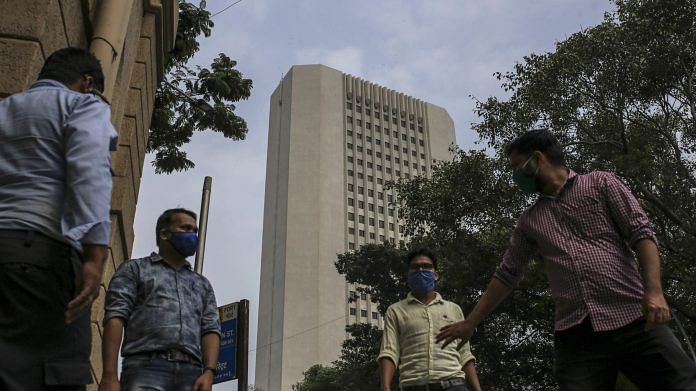New Delhi: India’s monetary policy makers will likely maintain interest rates at a record low for a sixth straight meeting, while retaining their dovish bias for as long as needed to revive the economy from the pandemic.
The Reserve Bank of India’s six-member Monetary Policy Committee will keep the benchmark repurchase rate at 4% Friday, according to all but one of the 31 economists surveyed by Bloomberg as of Wednesday afternoon. Traders will be watching for cues on extension of a bond-buying program as well as for any change in language on its policy stance guidance.
Although the meeting takes place in the backdrop of waning infections in recent days, India still continues to be the global virus hotspot. Localized lockdowns from as early as March have cost the economy, with the output gap widening and the jobless rate rising — factors the central bank will consider as it weighs the need for supporting growth despite surging inflation.
“Forward-looking inflationary expectations have risen sharply,” said Radhika Rao, an economist at DBS Bank in Singapore, who expects the MPC to stand pat. But the RBI’s priorities “lie beyond the policy rate, with emphasis on the financial sector and markets stability,” she said.
Here’s what to watch for in the MPC decision to be announced by Governor Shaktikanta Das in Mumbai on Friday morning:
Growth prospects
The central bank, which expects the economy to expand 10.5% in the year that began April, may probably lower its forecast after a slew of recent high-frequency indicators showed a hit to activity. It’s current reading is underpinned by expectations of a normal monsoon, a return of pent-up demand once lockdowns end and an improved pace of vaccination. A revision, though, will be a close call.
“The RBI may want to sit tight in view of the still high pandemic cases,” said Pranjul Bhandari, chief India economist at HSBC Holdings Plc, referring to the rate decision. “We think the one change it might make is a markdown in the FY22 growth forecast.”
Inflation outlook
A rise in input and wholesale costs due partly to supply disruptions caused by the pandemic are beginning to feed into retail inflation — the measure targeted by the RBI to decide its monetary policy setting. That could nudge the central bank to revise its forecast, which is pegged at 5.2% for the current and next quarter, 4.4% for the three months to December and 5.1% in fiscal fourth quarter.
Although food inflation has eased, dragging down the headline number, any decline in overall price pressures will be short-lived, according to Bloomberg Economics’ Abhishek Gupta. He expects supply shortages due to lockdowns and rising commodity costs pushing retail prices higher.
More QE
Bond traders will be watching to see whether the central bank announces a second tranche of its so-called government securities acquisition program, or its version of quantitative easing, for the July to September period.
Under the first tranche, the RBI has so far bought bonds worth 600 billion rupees ($8 billion) of the total one trillion rupees it planned to purchase in the quarter ending June. The program, together with its own version of ‘Operation Twist’ where it buys long-dated bonds and sells the shorter ones, has helped the central bank keep benchmark 10-year sovereign yields anchored around 6%.
“The key expectation is either an announcement or indication of continued support through bond purchases,” said Badrish Kulhalli, head of fixed-income at HDFC Life Insurance Co. “If the RBI announces the second round of G-SAP, the market would be expecting at least one trillion rupees for the next quarter.”
Banking relief
Pressure is growing on the RBI, which is also the banking regulator, to provide relief to stressed borrowers. Bankers have asked the RBI to extend the existing loan restructuring program until December 2023. Such an extension will prevent downgrading of asset quality, helping lenders mask the true extent of bad loans.
Lenders have also urged the regulator to allow borrowers to continue access to higher amounts of working capital loans until the end of September after the relaxation ended in March.- Bloomberg
Also read: RBI’s MPC begins 3-day deliberations amid expectations of status-quo in policy rate






